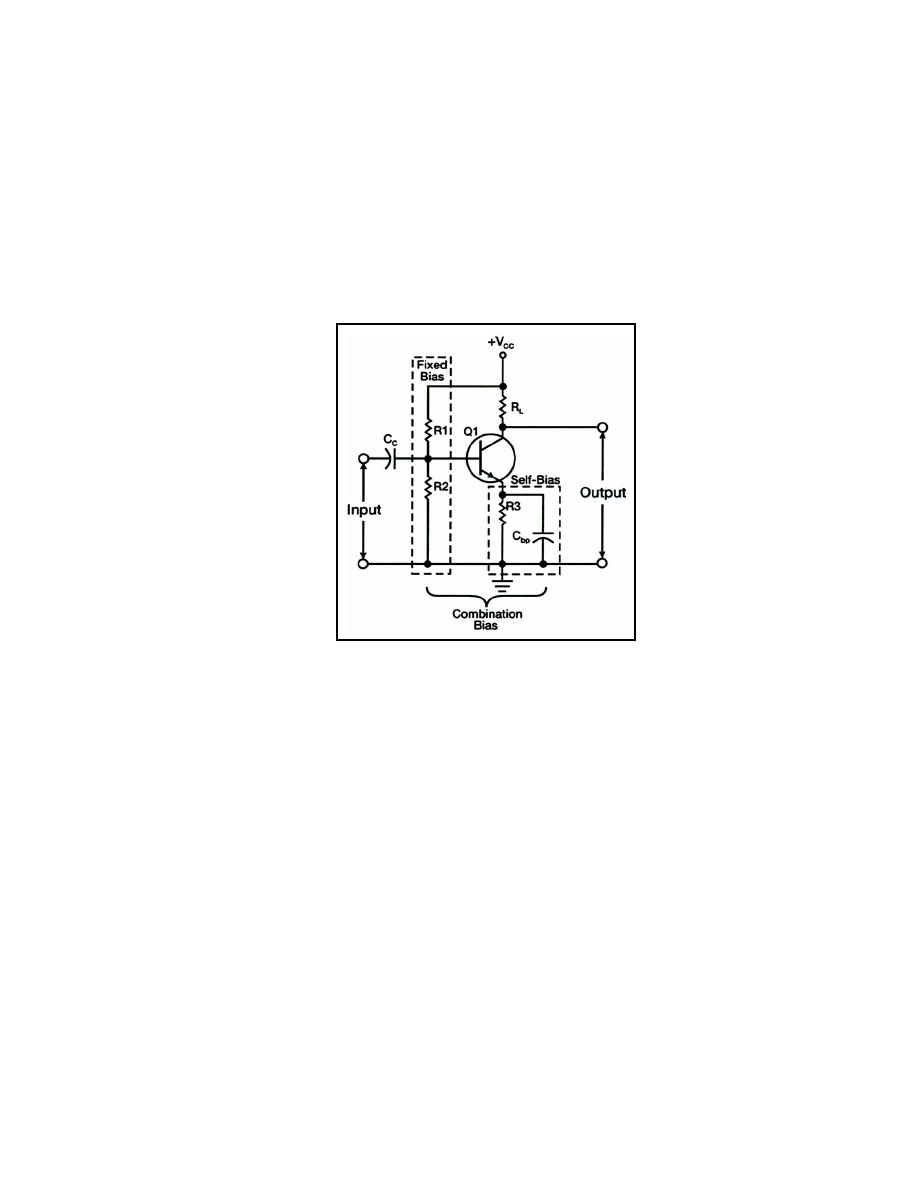
___________________________________________________________________________ Transistors
bias. Should IE increase, the voltage drop across R3 would also increase, reducing VC. This
reaction to an increase in IE by R3 is another form of degeneration, which results in less
output from the amplifier. However, to provide long-term or DC thermal stability and at
the same time allow minimal AC signal degeneration, the bypass capacitor CBP is placed
across R3. If CBP is large enough, rapid signal variations will not change its charge
materially and no degeneration of the signal will occur.
2-51. The fixed-bias resistors (R1 and R2) tend to keep the base bias constant while the
emitter bias changes with emitter conduction. This action greatly improves thermal
stability and at the same time maintains the correct operating point for the transistor.
Figure 2-16. Basic Transistor Amplifier with Combination Bias
AMPLIFIER CLASSES OF OPERATION
2-52. Earlier in this chapter we assumed that for every portion of the input signal there
was an output from the amplifier. This is not always the case with amplifiers. It may be
desirable to have the transistor conducting for only a portion of the input signal. The
portion of the input for which there is an output determines the class of operation of the
amplifier. The following are the four classes of amplifier operations:
Class A.
Class AB.
Class B.
Class C.
Also refer to Figure 2-17 for a comparison of output signals for the different amplifier
classes of operation.
23 June 2005
TC 9-62
2-17



 Previous Page
Previous Page
